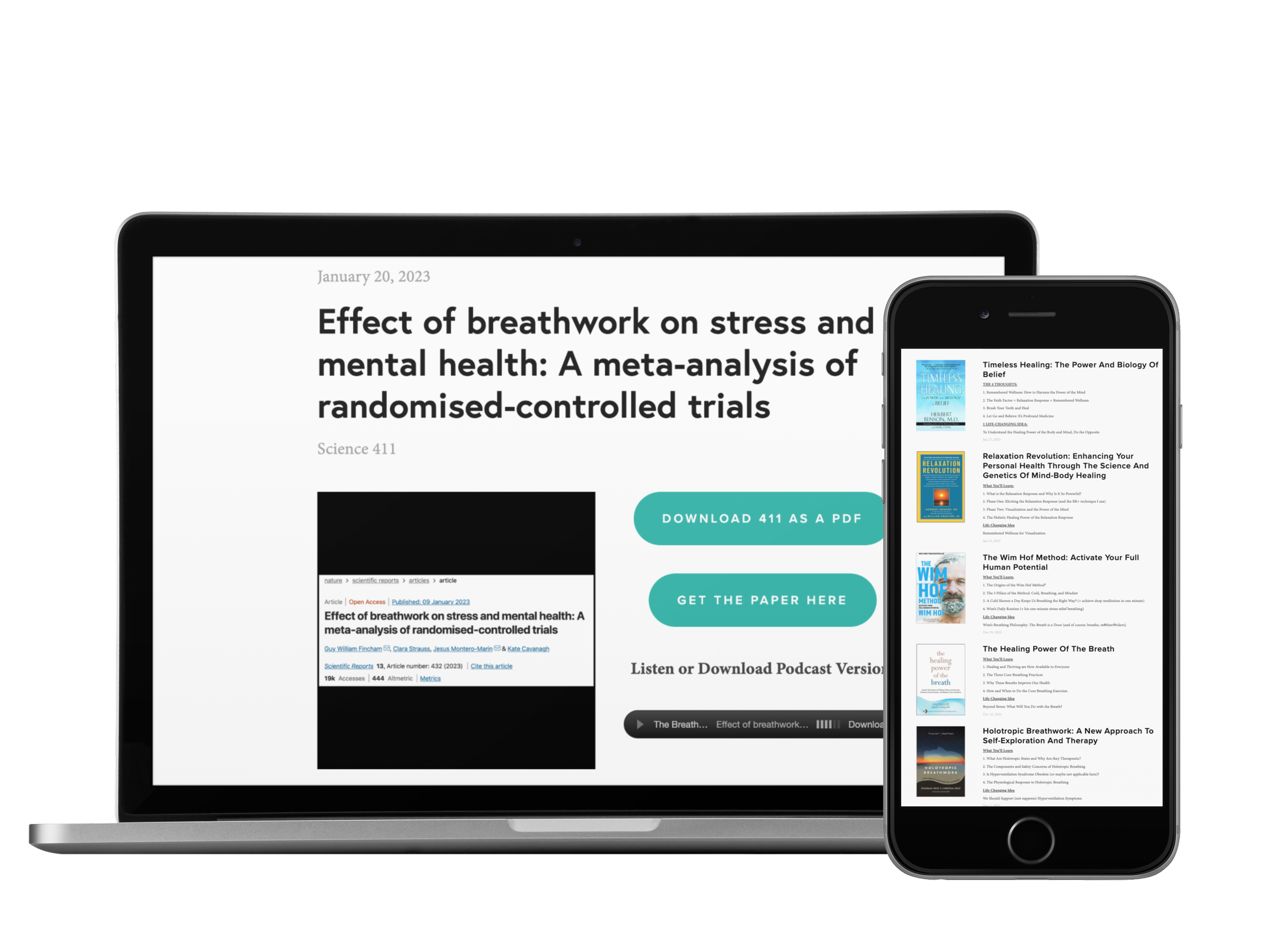Listen Instead of Reading
If you enjoy listening, you can subscribe to the audio version on Spotify, Apple Podcasts, and Audible so you don’t even have to look at the email 😊
4 THOUGHTS
1. The Passion Paradox
I love breathing and lose sleep thinking about it.
2. Two Unconnected (but highly related) Quotes to Contemplate
“To know that the mind is the root of everything is to realize that we are ultimately responsible for both our own happiness and our own suffering. It is in our hands.” – Sogyal Rinpoche
“By controlling your breathing, you can use a voluntary mechanical behavior to make a profound change on your state of mind.” - Emma Seppälä, Ph.D.
3. An Easy Way to Change Your Brain & How You Feel
“Every time you take in the good, you build a little bit of neural structure. Doing this a few times a day—for months and even years—will gradually change your brain, and how you feel and act, in far-reaching ways.”
– Rick Hanson, Ph.D., Buddha’s Brain
Here’s a simple way to put this idea into practice during your day: Take a couple of breaths and think to yourself, “This is great! I have an abundance of the most valuable resource known to our species, and I don’t even have to work that hard to get it!”
***
P.S. I use this a lot. Sometimes it feels too forced, and I don’t notice much of anything. But sometimes, it profoundly shifts my mindset, making it worth it every time 🙏
4. Nasal Breathing Counteracts the Effects of Gravity
“In this work, we have demonstrated that nasal breathing counteracts the effects of gravity on pulmonary blood flow in the upright position by redistribution of blood to the nondependent lung regions.”
I re-read this excellent paper and wanted to re-share this remarkable finding: Due to nitric oxide, nasal breathing redistributes blood flow from the bottom to the top of the lungs, countering gravity’s effects.
This *might* mean that nasal nitric oxide was an evolutionary adaption to lessen gravity’s effects, allowing us to walk upright 🤯
P.S. Check out the IG post for neat graphics.
1 Quote
“Breathing, it turns out, can be the quickest, most direct path to deep rest. When you can’t go to a retreat, you can bring the retreat to you. And all you need is your breath.””
1 Answer
Category: Nasal Nitric Oxide
Answer: Compared with mouth breathing, research shows that nasal breathing delivers about this much more nitric oxide to the lungs.
…
(Cue the Jeopardy! music.)
…
Question: What is six times more?
In good breath,
Nick Heath, T1D, PhD
“Breathing is the compound interest of health & wellness.”
* An asterisk by a quote indicates that I listened to this book on Audible. Therefore, the quotation might not be correct, but is my best attempt at reproducing the punctuation based on the narrator’s pace, tone, and pauses.





